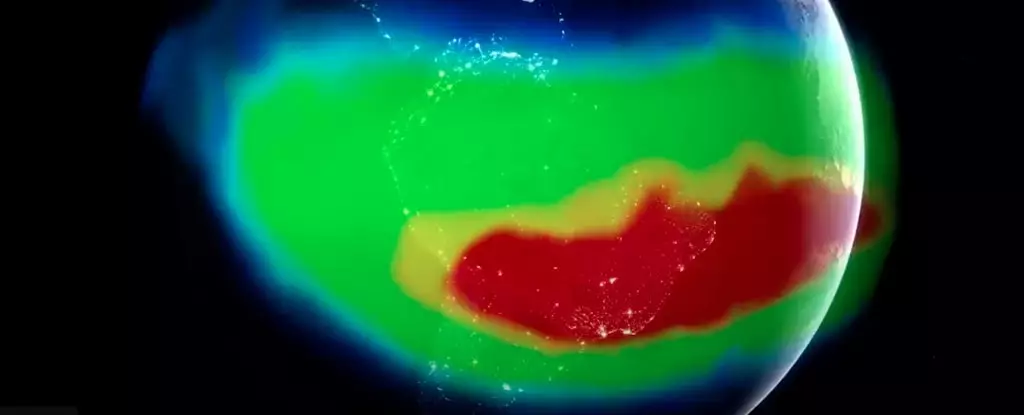For decades, scientists have kept a watchful eye on an unusual and puzzling feature of Earth’s magnetic field known as the South Atlantic Anomaly (SAA). This peculiar area, characterized by its significantly lower magnetic intensity, stretches between South America and Southwestern Africa, creating unique challenges for space exploration and technology. NASA, in particular, has taken a keen interest in the SAA, primarily due to its potential to disrupt satellite operations, including those of the International Space Station (ISS). Understanding the SAA not only helps prevent technological failures in space but also paves the way for further exploration of the underlying geophysical phenomena.
At its core, Earth’s magnetic field is generated by moving molten iron within the outer core. This process creates electrical currents that produce magnetic fields, forming a protective shield around the planet. However, the generation is not uniform, and various geological features can influence the strength and behavior of these magnetic fields. The SAA is thought to be a consequence of complex interactions between these currents and geological structures, particularly the African Large Low Shear Velocity Province, located deep within the Earth. The presence of this massive reservoir of dense rock disrupts the magnetic field’s generation, resulting in the distinctive behavior observed in the SAA.
One of the most pressing concerns regarding the SAA is its impact on space operations. Satellites traversing this weakened magnetic region are exposed to an influx of charged particles from the Sun, which poses a risk of operational failures. When high-energy protons, propelled by solar activity, collide with satellite systems, they can cause short-circuits and glitches. While many of these may only lead to minor issues, the potential for significant data loss or damage to key satellite components necessitates that operators are vigilant. Consequently, precautionary measures often involve shutting down sensitive spacecraft systems before entering this anomaly-rich environment.
Recent studies have revealed that the SAA is not a static phenomenon; rather, it exhibits dynamic changes over time. NASA’s heliophysicists, through comprehensive tracking and research, have documented not only the movement of the anomaly but also its remarkable tendency to split into two distinct regions, each characterized by its own center of minimum magnetic intensity. This division, observed as a growing trend, raises questions about the defining features of the SAA and its implications for the stability of Earth’s magnetic environment. The findings suggest a complex and ever-evolving magnetic landscape that warrants ongoing study.
Interestingly, research has suggested that the SAA may not be a recent phenomenon. Some studies indicate that this anomaly has been recurring for millions of years, challenging the notion that it is a simple or temporary feature of Earth’s magnetic field. If the SAA has indeed existed for up to 11 million years, it prompts inquiries into the broader context of geomagnetic events and the nature of magnetic field reversals that have happened throughout Earth’s history. Such understanding is crucial, as it may inform predictions regarding future shifts in the planet’s magnetic field, possibly even preventing drastic ecological or technological disruptions.
Given the complexity and potential repercussions of the South Atlantic Anomaly, ongoing monitoring and research are vital. Scientists, particularly those at NASA, advocate for sustained attention to this magnetic oddity, recognizing that shifts in its morphology may have implications far beyond its immediate vicinity. The quest for greater understanding not only enhances our knowledge of Earth’s geophysical systems but also strengthens the resilience of the technologies that depend on them, thereby safeguarding future missions and advancements.
The South Atlantic Anomaly embodies the intersection of Earth’s geophysical phenomena and modern technology. As we delve deeper into the mystery of this low magnetic intensity region, we uncover not only the challenges it presents to satellites but also the intricate workings of our planet’s core. With a better understanding of the SAA, we can better prepare for the myriad ways that the Earth’s magnetic environment influences life on our planet and in the cosmos beyond. The SAA is a reminder of the unpredictable nature of Earth’s systems and the pressing need for continued observation and study as we strive to decode the enigmas of our planet.


Leave a Reply